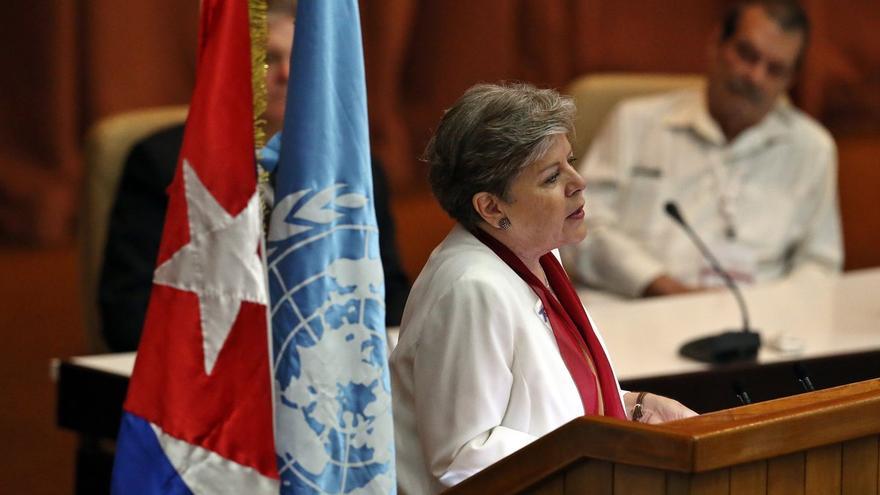
![]() 14ymedio, Havana, November 20, 2019 — Alicia Bárcena, Executive Secretary of the Economic Commission for Latin America and the Caribbean (ECLAC), warned on Tuesday that “timely and quality statistical information is an essential condition” for the government to perform effectively. The official called for a break in statistical silence in a region where many countries make up or hide their figures.
14ymedio, Havana, November 20, 2019 — Alicia Bárcena, Executive Secretary of the Economic Commission for Latin America and the Caribbean (ECLAC), warned on Tuesday that “timely and quality statistical information is an essential condition” for the government to perform effectively. The official called for a break in statistical silence in a region where many countries make up or hide their figures.
Without mentioning particular cases, Bárcena urged countries to “more faithfully portray” their realities and also to “look for more and better data to respond to the enduring demand for sustainable equitable development,” during her speech at the Tenth Meeting of the Statistical Conference of the Americas, which is being held in Santiago, Chile until Thursday the 21st.
The senior official stressed that “it is essential for policy to be based on evidence from national statistical systems that add increasingly autonomous statistical institutes, central banks, health, economic and environmental agencies, among others.”
Although Bárcena avoided giving examples of countries that hide their true indicators, among the most striking cases in the region is Cuba, which for more than half a century has retouched or kept under secrecy the real figures of malnutrition, unemployment, criminality and gender violence, among others. Economic data are also frequently retouched or inflated by Havana.
On several occasions ECLAC has lamented that “Cuba’s main economic statistics have an annual timeliness and are published with a lag of several months and even years.” It’s a situation that continues to repeat itself despite the fact that the publication of reports by Cuba’s National Statistics Office was given more prominence since Raul Castro took power in 2008.
Last August ECLAC predicted that the Cuban economy would grow by just 0.5% in 2019, contrary to the optimistic forecasts previously announced by the government of the island. A month earlier, Miguel Diaz-Canel assured the National Assembly of People’s Power that the GDP would grow 2.2% this year.
For decades, economists have questioned the reliability of official statistics reported by Cuba and used for their analysis by international organizations such as ECLAC, the World Bank or the International Monetary Fund.
“The bias in Cuban GDP dollar estimates does not only derive from the Cuban government,” warned economist Pavel Vidal, “but from multiple institutions that have tried to approach the issue and have found it difficult to reach a number, due in part to the dual exchange rates and the absence of comparative statistics on prices.”
Another indicator that the Cuban government has hidden for decades has been the figures on poverty. Although “a survey in 2000 indicated that 20% of Havana’s population was poor, and that figure was probably higher in the rest of the country,” says economist Carmelo Mesa-Lago.
Translated by: Rafael Osorio
______________
COLLABORATE WITH OUR WORK: The 14ymedio team is committed to practicing serious journalism that reflects Cuba’s reality in all its depth. Thank you for joining us on this long journey. We invite you to continue supporting us by becoming a member of 14ymedio now. Together we can continue transforming journalism in Cuba.
